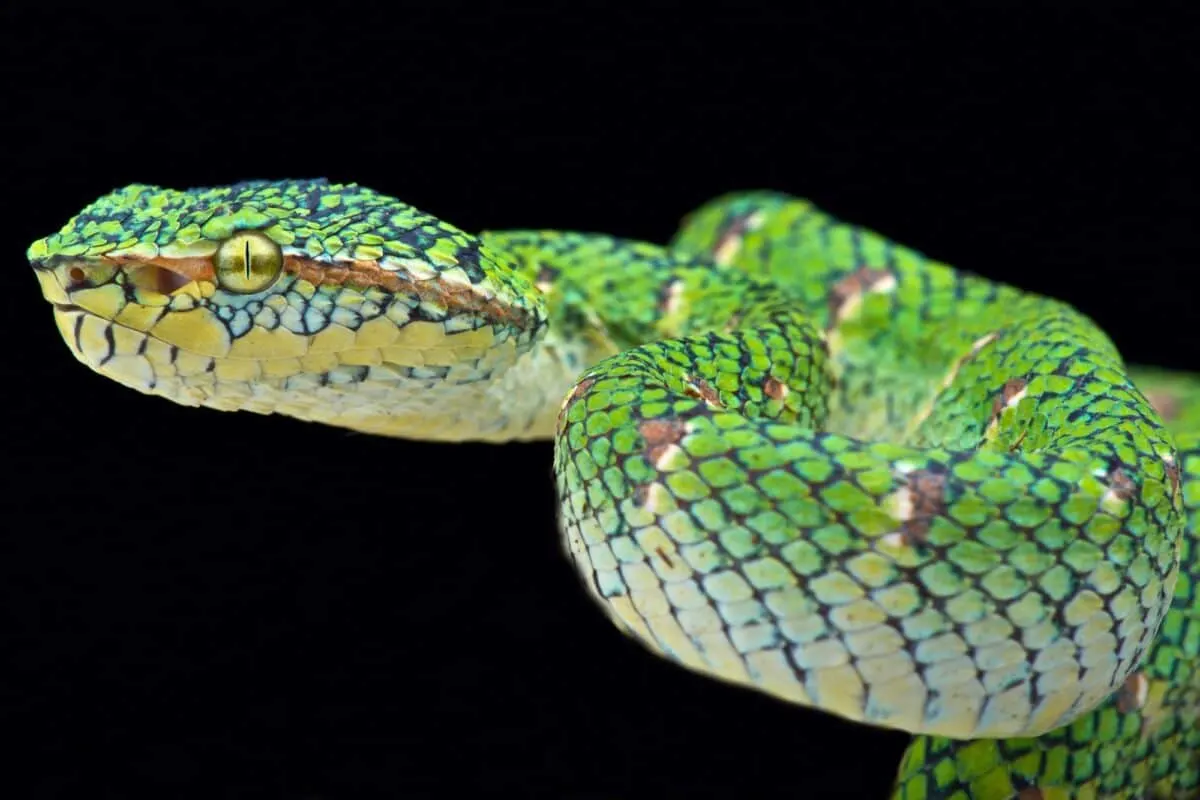The temple viper or Bothrops temple is a venomous pit viper found in the South American region. This viper is known for its aggressive behavior and potent venom, which can lead to death if not treated promptly.
This article will delve deeper into this creature’s characteristics, behavior, and venom toxicity. Additionally, we will discuss the prevalence of temple viper bites and the measures taken to prevent them.
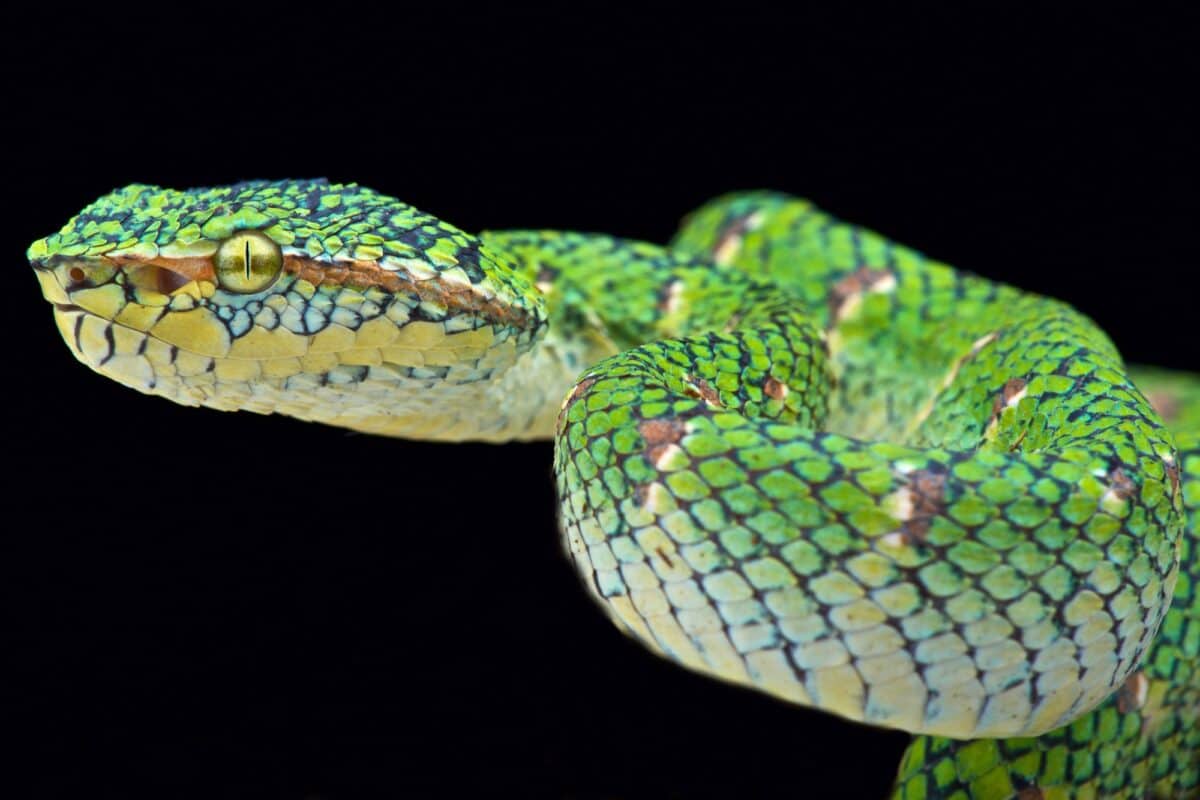
Want to jump ahead? Click below
Physical Characteristics
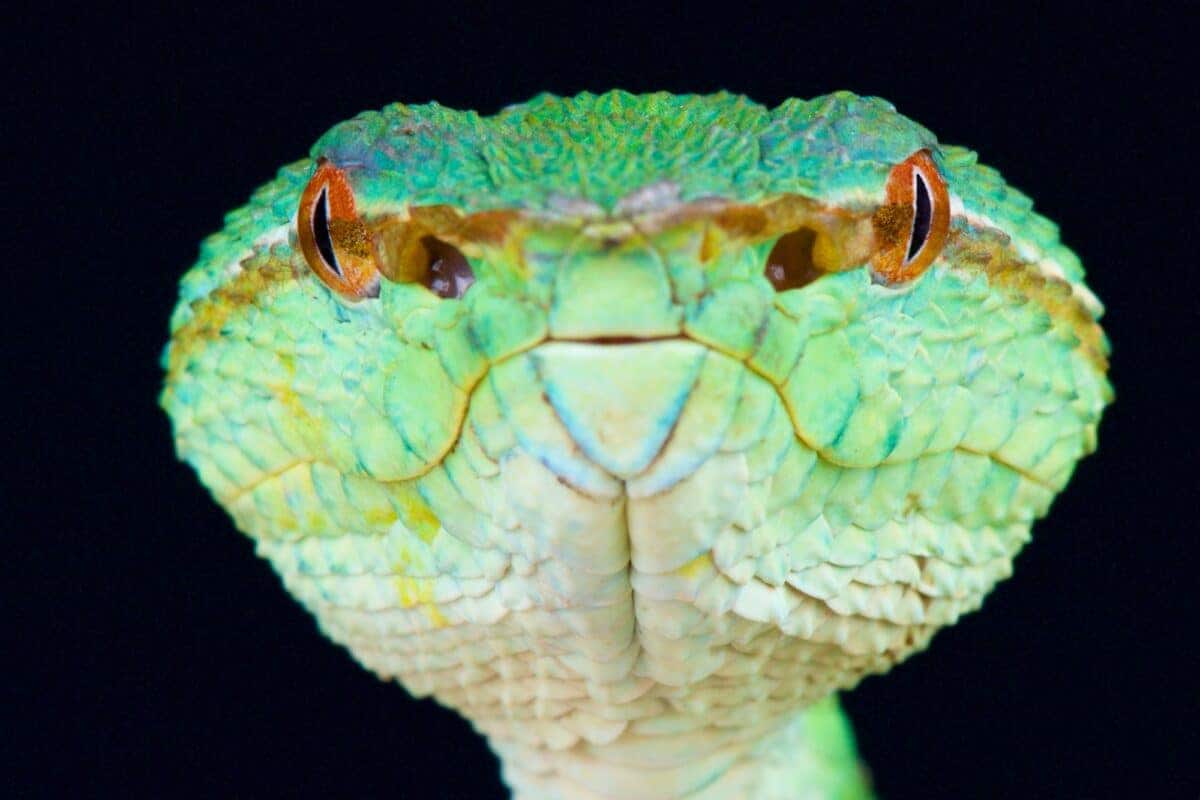
The temple viper is a medium-sized snake that can grow up to five feet long. The skin color varies from light brown to dark brown, with distinct dark brown or black bands that run down the length of the body.
The viper’s eyes are set forward with vertical pupils, allowing it to see stereoscopically and accurately strike its prey. The temple viper also has heat-sensing pits to detect warm-blooded prey.
Habitat and Behavior
The temple viper is primarily found in Central and South America, in warm and humid areas, including rainforests and jungle areas. It is a solitary and nocturnal creature, spending most of its time in hiding spots such as hollow logs, caves, or thick vegetation.
The temple viper is known to be both aggressive and defensive, beating when it feels threatened or cornered. This behavior and its potent venom make this snake incredibly dangerous.
Venom Toxicity
The temple viper’s venom comprises hemotoxins, which can cause tissue damage and disrupt blood clotting. However, with quick medical intervention and antivenom treatment, the chances of full recovery are high.
Prevalence of Temple Viper Bites
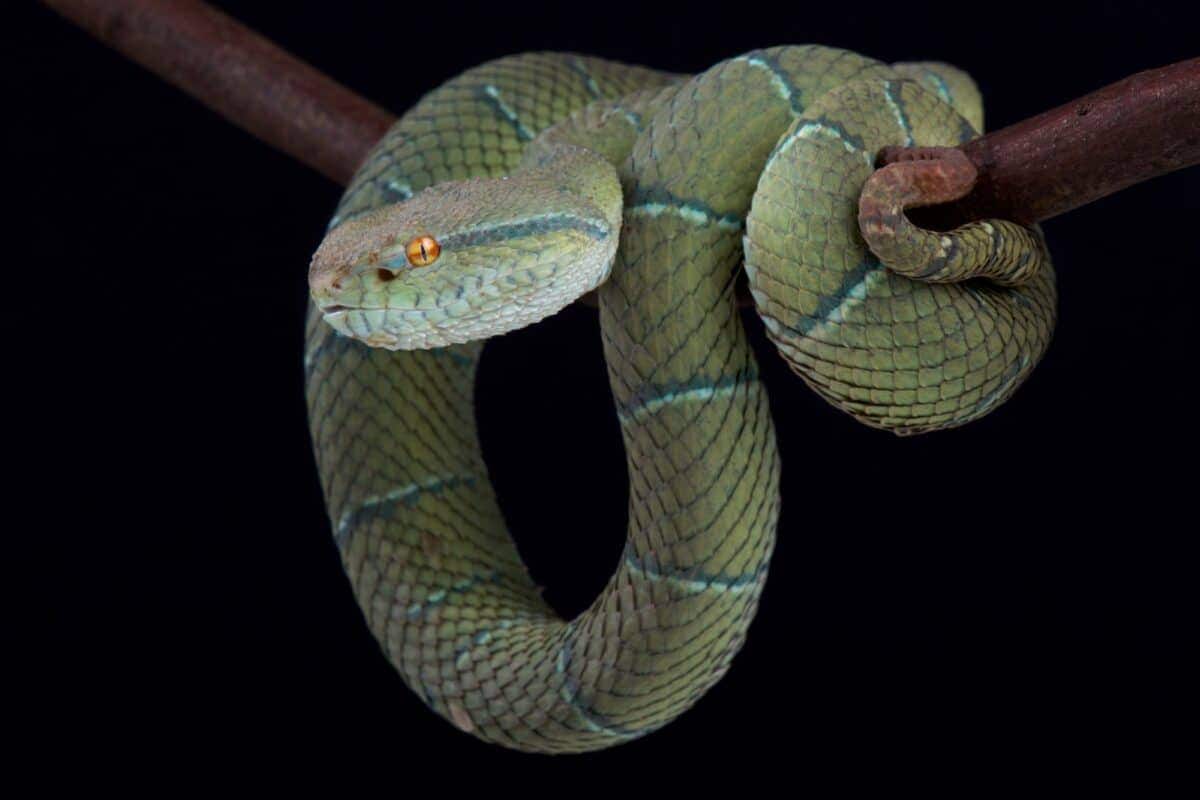
Temple viper bites are prevalent in Central and South America, with Brazil having the highest snake bite incidents. These snakes are known to be aggressive and territorial, and most bites occur when someone accidentally steps on or near the snake.
Additionally, farmers and rural workers who work in areas where these snakes are prevalent are at higher risk for bites. The best way to avoid being bitten by this deadly snake is to be well informed about its habitat and behavior and take precautions such as wearing protective clothing and boots when venturing into the areas where they are known to reside.
Symptoms and Treatment of Temple Viper Bites
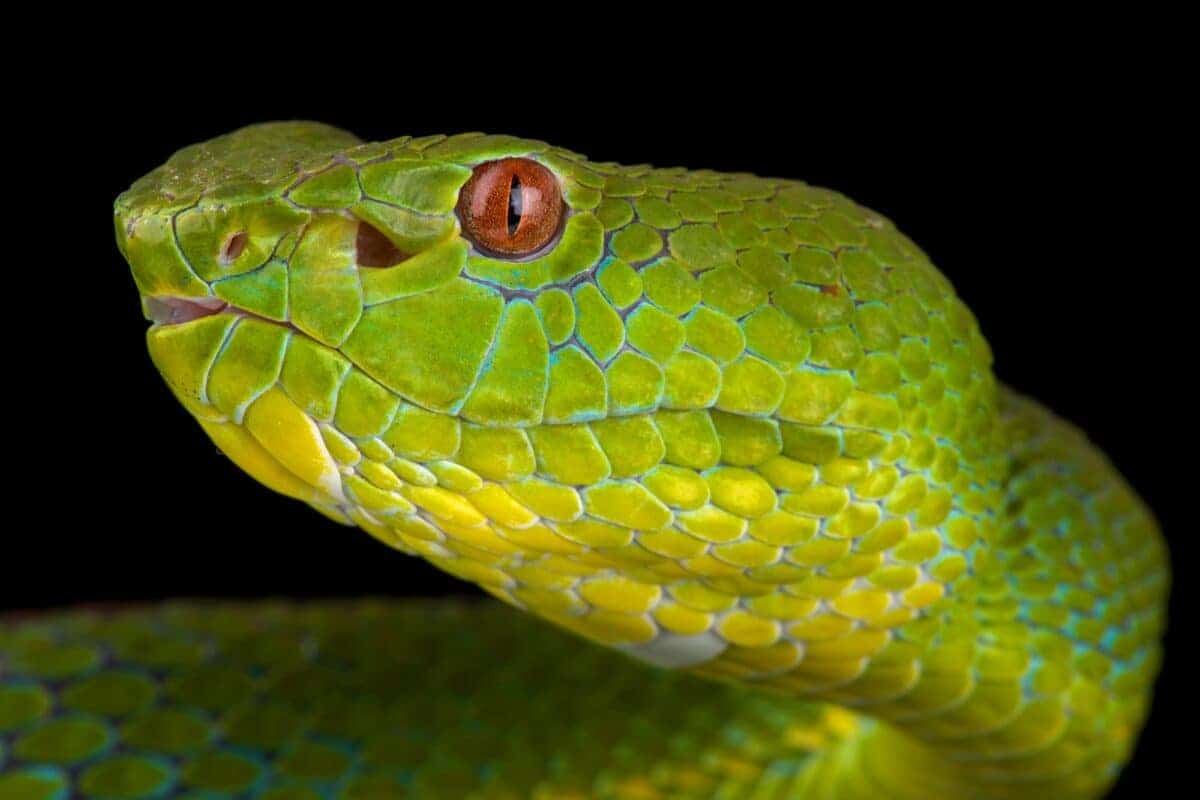
The venom from a temple viper bite can cause various symptoms, including local and systemic effects. The venom can also cause vomiting, abdominal pain, dizziness, and difficulty breathing. In severe cases, the bite can lead to paralysis, coma, and even death.
Immediate Medical Attention
If a temple viper bites someone, it is crucial to seek immediate medical attention. Visual identification of the snake is optional. The information can assist in choosing the correct antivenom. The victim should avoid activities that increase blood circulation, such as exercising or running, which can cause the venom to spread more quickly.
Treatments Available
Several treatments for temple viper bites are available, including antivenom, pain management, and wound care.
Antivenom is an antidote consisting of proteins from the blood of animals immune to the venom. It neutralizes the poison and prevents it from damaging tissues and organs. Prompt administration of antivenom is critical; in some instances, more than one dose may be necessary.
In addition to antivenom, pain management, and wound care are essential for individuals bitten by a temple viper. Medical professionals should do wound care. It involves cleaning the bite wound with soap and water, applying a sterile dressing, and elevating the affected area to minimize swelling.
Preventing Temple Viper Bites: Protecting Yourself in the Wild
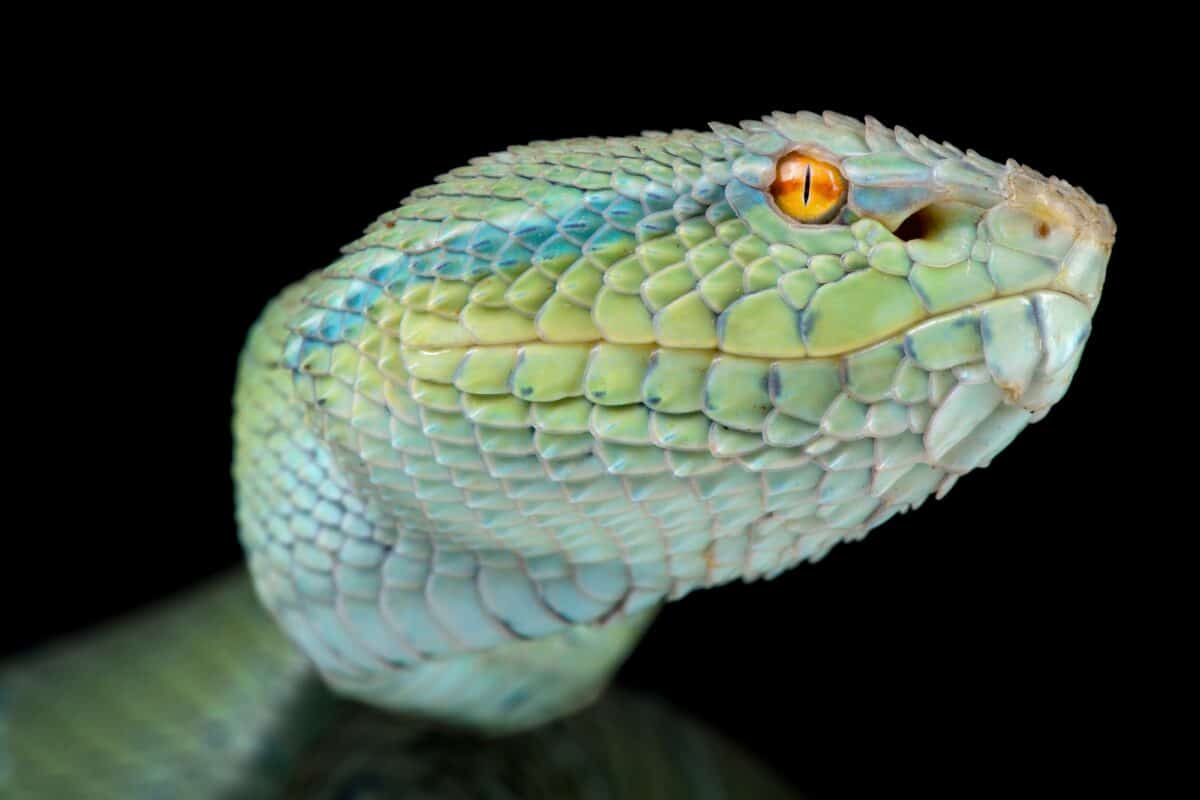
The risk of a temple viper bite can be reduced through preventative measures. Wearing protective clothing, avoiding their known habitats, and being cautious when hiking or camping in snake-infested areas.
Temple vipers are known to live in a variety of habitats. This includes forests, grasslands, and rocky outcroppings. The snake is active primarily during the warm seasons, making avoiding it all the more challenging during the summer months.
Learn more about preventing temple snake bites.
Wear Covered Clothes
Evidently, one of the most effective ways to reduce the risk of being bitten by a temple viper is to wear clothing that provides full body coverage, including the arms and legs. Footwear should also be carefully chosen. The best protection is high, sturdy boots.
Wearing gloves can also offer additional protection when exploring known snake habitats. Additionally, using a stick or other long object to move foliage away cautiously before stepping can help avoid close contact with unseen snakes. Preventative measures should be taken to offer protection to pets as well.
Avoid Snake Habitats
Avoiding known snake habitats can also significantly reduce the risk of a temple viper bite. Temple vipers inhabit rocky areas, forest floors with a high presence of leaf litter, and near water sources like streams and rivers.
It is best to avoid walking through these areas whenever possible, especially at night. Staying alert and watchful for any signs of a snake is essential when hiking through these areas.
Educate The Public
Lastly, educating the public about the risks associated with temple viper bites and how to respond to them is paramount. Education can help increase awareness of the hazards of the environment, identify snakes, and differentiate between venomous and non-venomous.
Additionally, it can provide information on what to do if bitten, including administering appropriate first-aid and seeking medical attention instantly. Education in awareness, generally, of the surroundings can educate about safe practices in the wild and mitigate the risk of such interactions.
Key Points
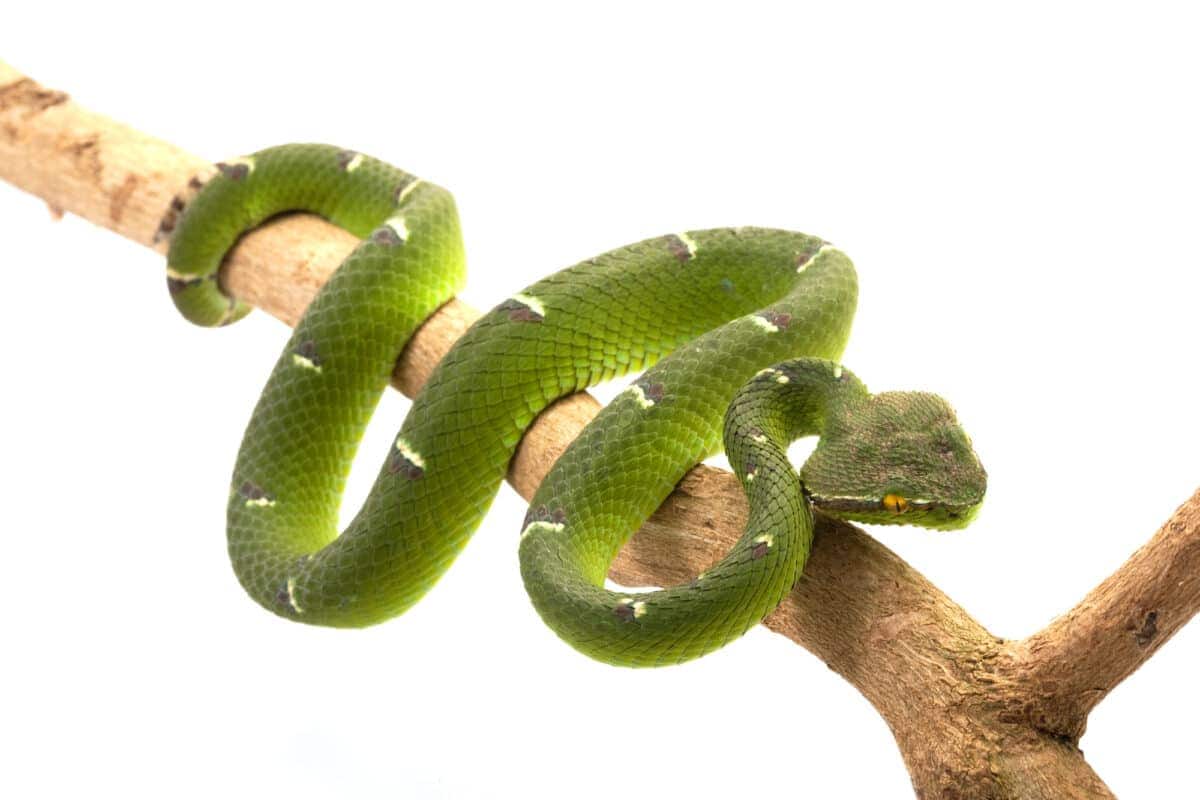
| The temple viper or Bothrops temple is a venomous pit viper found in the South American region. |
| It is paramount to educate the public about the risks associated with temple viper bites and how to respond to them. |
| Several treatments for temple viper bites are available, including antivenom, pain management, and wound care. |
| The risk of a temple viper bite can be reduced through preventative measures such as wearing protective clothing, avoiding their known habitats, and being cautious when hiking or camping in snake-infested areas. |
| Educating the public about the risks associated with temple viper bites and how to respond to them is paramount |
Wrapping Up with the Temple Viper Bite
In conclusion, temple viper bites are a severe threat in Southeast Asia, and it is crucial to take prevention and cautionary measures to avoid potential injury or death. Several treatment options are available, including antivenom and supportive care, such as hydration and pain management.
Immediate medical attention is crucial, as delayed treatment can lead to complications and death. Prevention methods are also essential to avoid snake bites, such as being aware of your surroundings and wearing appropriate protective clothing when in snake-infested areas.
Education on using a snakebite kit and the correct application of pressure immobilization can also be life-saving. Understanding the symptoms and available treatments can help individuals seek medical attention immediately, while education and awareness can help prevent future snake bites.
Individuals can enjoy Southeast Asia’s natural beauty and wildlife by taking these precautions while staying safe from temple viper bites.
Thanks for following along with me! I hope you enjoyed reading about these two entertaining animals. Discover Habu Pit Viper Bite, Discover The Fer-De-Lance Pit Viper Bite, and Discover The Harlequin Shrimp Bite is next.
- Bald Eagle Family Expand Their Nest In California - April 24, 2024
- Firefighter Saves Abandoned Kittens Found Cuddling In Hoses - April 24, 2024
- Dolphins Get High Playing Catch With A Pufferfish - April 24, 2024

